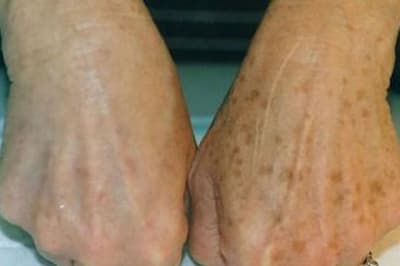Residents blamed for foam in Noyyal
tnn | Sep 28, 2017, 00:49 ISTTirupur: While state environment minister K C Karuppannan is facing flak from environmentalists and political parties for stating that the foam formation recently found in the Noyyal was due to sewage discharge from domestic households, the Tamil Nadu Pollution Control Board's (TNPCB) laboratory tests on samples collected from the water body supports his view.
The samples, which were collected from different places on September 19 when the foam was found, contained chemical oxygen demand (COD) less than 50 mg per litre. Moreover, the test results also indicated that there were chemicals like nitrate and phosphate, which are seen in detergents, found in the samples. The presence of industrial effluents was not there or was very minimal, while the presence of detergents was high, says TNPCB.
Unexpectedly, Coimbatore and Tirupur districts received good rainfall before the start of the north-east monsoon this year. On September 19, a day after it rained heavily, people living on the banks of the Noyyal near Nataraja theatre witnessed foam formation at the Alankadu check dam for the first time. At one stage, the foam went up 10 feet high along the pillars of an overbridge next to the check dam.
As the incident happened few days after the TNPCB sealed a CETP and 23 dyeing and bleaching units for polluting the river, it had forced the state government to convene a consultation meeting with members of the Dyers Association of Tirupur. It was at this meeting that the environment minister explained the reason for the foam formation. Meanwhile, the TNPCB collected samples of water from the Nallamman check dam and tested them.
"The lab tests say it contained surfactants of 490 microgram per liter, and also had presence of nitrate and phosphate. It indicates that the samples contained the chemicals which could be seen in the detergents," said K Ilankumaran, Tirupur north division environmental engineer.
The main parameter for finding whether the waste water has industrial effluents or not is COD, which was found to be less than 50 mg per liter in the samples. The COD would have been more than 1000 mg per liter if the effluents had dominant presence in the water, said Ilankumaran.
He clearly stated, "We cannot rule out the fact that industrial effluents were not discharged into the river during that time, we have a sophisticated mechanism in place to monitor the illegal discharge and stringent action is initiated against the violators. But the effluents were not the reason for the foam formation."
Such foam formation was also seen at the Irugur check dam, which is located above the Nallamman check dam and also at other check dams in Coimbatore district. According to our observation, when the highly detergent content water reached the check dams, that walls of which are about 8 ft high, the fall and turbulence happened to the water coupled with aeration resulted in the foam formation. The rate of destruction of the foam was lesser than the rate of formation, he added.
S Sundarapandian, AAP state spokesperson, said, "The TNPCB and the dyeing units may give such reason for the foam formation. But it is true that industrial effluents are discharged into the river. The dyers' association is not ready to pinpoint such violators."
The samples, which were collected from different places on September 19 when the foam was found, contained chemical oxygen demand (COD) less than 50 mg per litre. Moreover, the test results also indicated that there were chemicals like nitrate and phosphate, which are seen in detergents, found in the samples. The presence of industrial effluents was not there or was very minimal, while the presence of detergents was high, says TNPCB.
Unexpectedly, Coimbatore and Tirupur districts received good rainfall before the start of the north-east monsoon this year. On September 19, a day after it rained heavily, people living on the banks of the Noyyal near Nataraja theatre witnessed foam formation at the Alankadu check dam for the first time. At one stage, the foam went up 10 feet high along the pillars of an overbridge next to the check dam.
As the incident happened few days after the TNPCB sealed a CETP and 23 dyeing and bleaching units for polluting the river, it had forced the state government to convene a consultation meeting with members of the Dyers Association of Tirupur. It was at this meeting that the environment minister explained the reason for the foam formation. Meanwhile, the TNPCB collected samples of water from the Nallamman check dam and tested them.
"The lab tests say it contained surfactants of 490 microgram per liter, and also had presence of nitrate and phosphate. It indicates that the samples contained the chemicals which could be seen in the detergents," said K Ilankumaran, Tirupur north division environmental engineer.
The main parameter for finding whether the waste water has industrial effluents or not is COD, which was found to be less than 50 mg per liter in the samples. The COD would have been more than 1000 mg per liter if the effluents had dominant presence in the water, said Ilankumaran.
He clearly stated, "We cannot rule out the fact that industrial effluents were not discharged into the river during that time, we have a sophisticated mechanism in place to monitor the illegal discharge and stringent action is initiated against the violators. But the effluents were not the reason for the foam formation."
Such foam formation was also seen at the Irugur check dam, which is located above the Nallamman check dam and also at other check dams in Coimbatore district. According to our observation, when the highly detergent content water reached the check dams, that walls of which are about 8 ft high, the fall and turbulence happened to the water coupled with aeration resulted in the foam formation. The rate of destruction of the foam was lesser than the rate of formation, he added.
S Sundarapandian, AAP state spokesperson, said, "The TNPCB and the dyeing units may give such reason for the foam formation. But it is true that industrial effluents are discharged into the river. The dyers' association is not ready to pinpoint such violators."
Get latest news & live updates on the go on your pc with News App. Download The Times of India news app for your device.
From around the web
More from The Times of India
From the Web
More From The Times of India

Can you guess how much money Shahrukh has?
Fropky.com
One Celebrity Reveals All: The Power Of Elimination
ActivatedYou
Never Get Frustrated About Clothes You Can't Wear Again!
Popdust for Dia&Co.
Can This Super-Coffee Help Joint Pain & Inflammation?
VitaCup
How To Fix Your Wrinkles (Do This Every Day)
LCR Health






































All Comments ()+^ Back to Top
Refrain from posting comments that are obscene, defamatory or inflammatory, and do not indulge in personal attacks, name calling or inciting hatred against any community. Help us delete comments that do not follow these guidelines by marking them offensive. Let's work together to keep the conversation civil.
HIDE